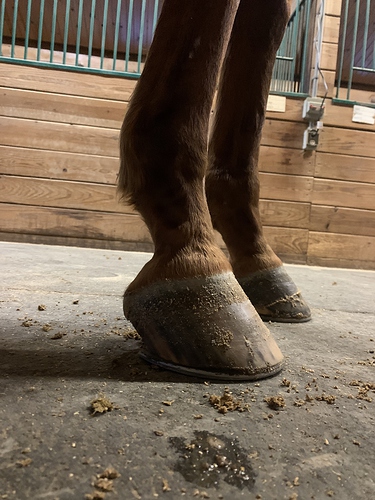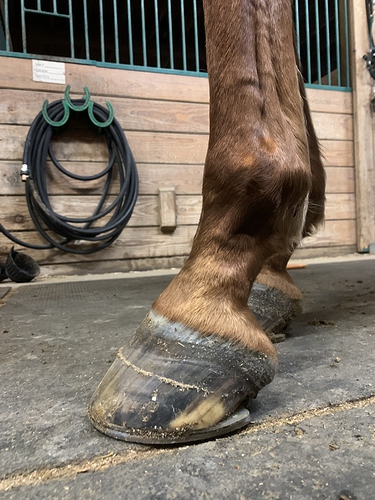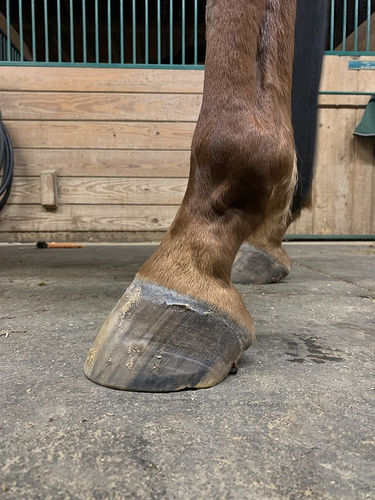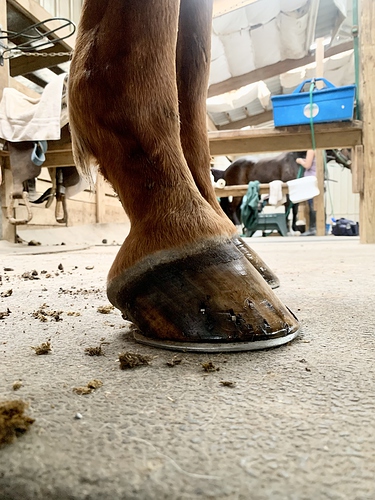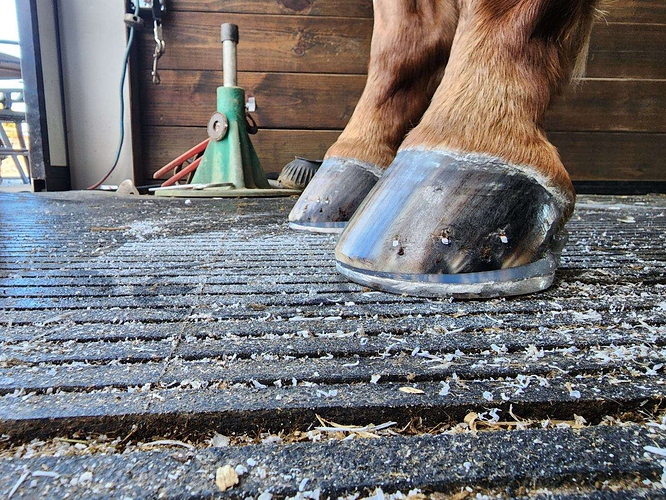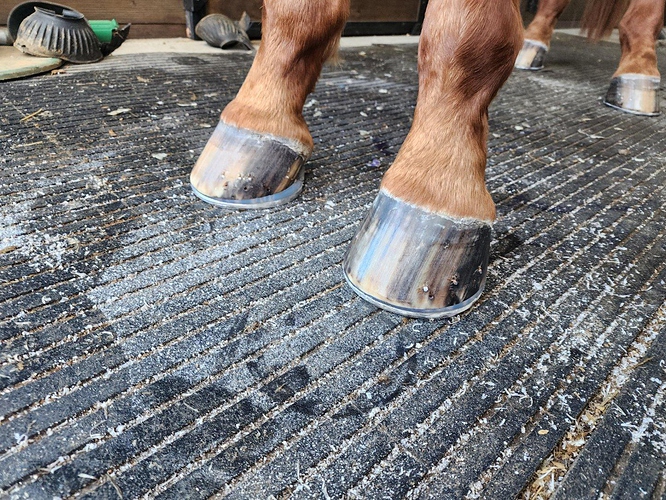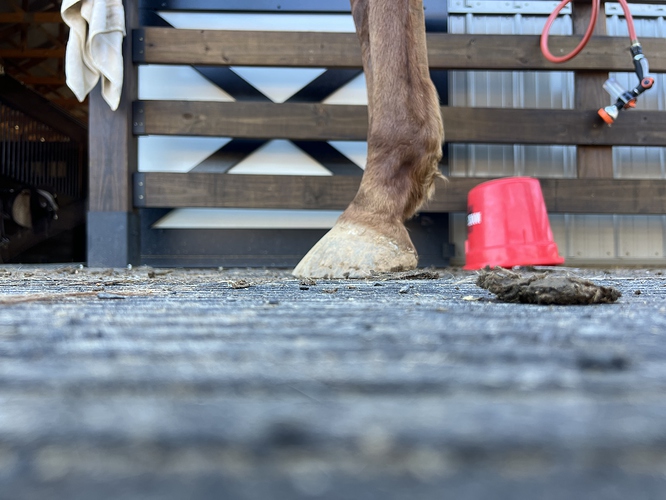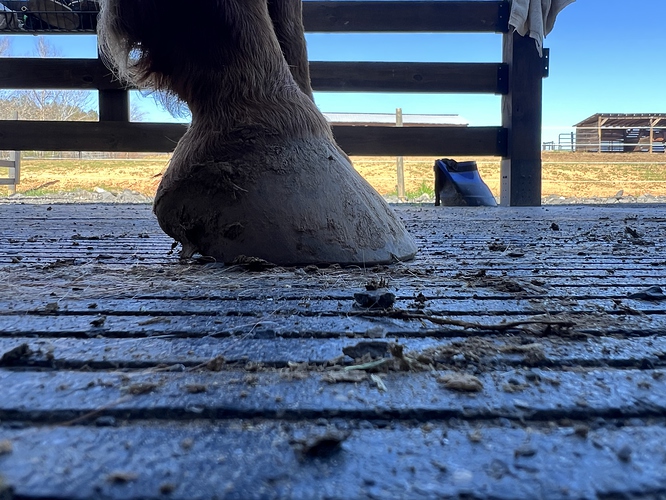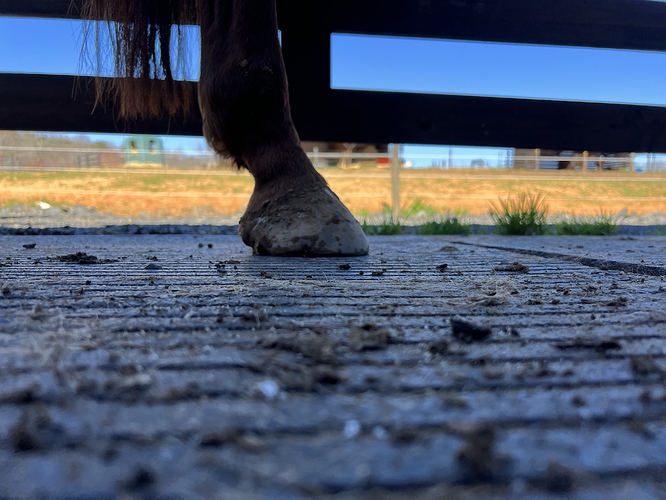Unfortunately a lot of folks are in this situation. It’s HARD to find a good hoofcare practitioner in a lot of areas, and I think as a whole we are so accustomed to seeing pathological feet that our sense of normal is super distorted. I started learning to trim shortly before a move. I had tried to find a farrier or trimmer in the new area–which is quite horsey and near a major vet school!–but couldn’t find anyone I would allow to touch my horse’s feet. My trimmer at the time offered to teach me, and I did a six month every weekend crash course with her. It’s been almost a decade and it’s evolved into having a handful of clients, lots of clinics and continuing education and experimenting. There’s now one other person in my area who I would potentially trust to trim feet, and I’ve referred her to folks who have asked me if I could take on more clients. I have a regular day job and no desire to trim full time.
So…this could be good or bad. Sometimes the concavity in a hind foot is because the NPA has gotten worse.  The more broken back P3 is, the more room there is for “concavity” to develop under it–it’s a bit of guesswork without rads, of course, but you can also sometimes tell by measuring the depth of the collateral grooves near the apex of the frog and near the heels. If it’s noticeably deeper at the apex than towards the heels, it’s very likely NPA. You can sometimes tell from pictures, too, but would need better pictures to really make an educated guess.
The more broken back P3 is, the more room there is for “concavity” to develop under it–it’s a bit of guesswork without rads, of course, but you can also sometimes tell by measuring the depth of the collateral grooves near the apex of the frog and near the heels. If it’s noticeably deeper at the apex than towards the heels, it’s very likely NPA. You can sometimes tell from pictures, too, but would need better pictures to really make an educated guess.
I have my horses out together 24/7 and some of them are in composites front and hind. Knock wood, I haven’t found a kick with a composite to be any worse than a kick with a bare foot. I wouldn’t turn horses out together with steels, but am not particularly concerned about composites, especially ones that are completely composite without a metal insert.
I’ve been SUPER pleased with the EasyShoe 3Ds for hind feet with NPA especially–of course the trim is essential, but I’ve seen really positive growth. This is the left hind of a horse who had horrible NPA behind and ongoing struggles with the fronts–the top left picture is from September, the day I first put on the 3Ds. The top right is from late October, after 5 weeks. The bottom picture is from late December, two cycles later. I did end up tweaking the trim a bit more on this foot in the bottom picture, but didn’t grab any other pictures. His comfort has noticeably improved.
I feel this to my core! Every time I trim and glue I wistfully think back to when the farrier came every six weeks, I wrote a check, and didn’t think much of it. It was certainly simpler and much less stressful! On the other hand, I’ve learned so much and am glad for the control and knowledge I have…but sometimes I wish I could just write a check. Alas, I can’t put that particular cat back in the bag! Although there’s no way I could afford to pay someone for the packages I can do myself!


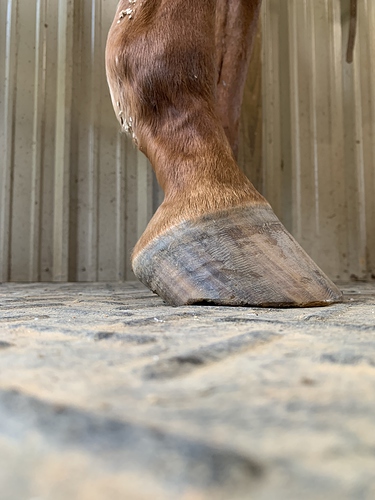
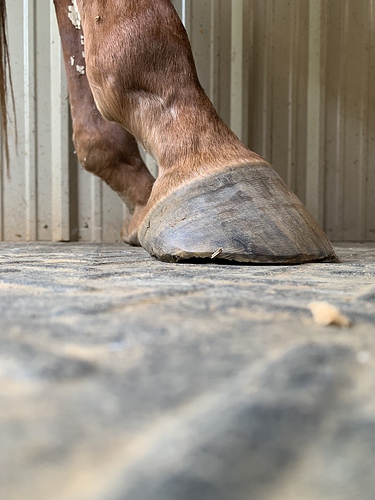
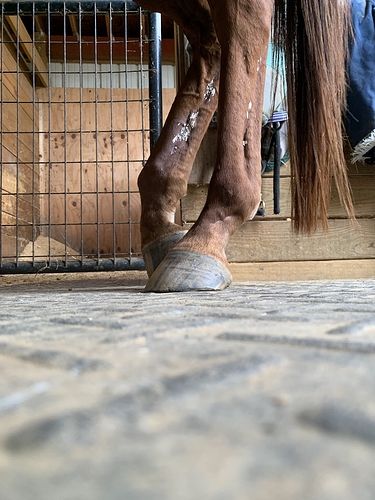
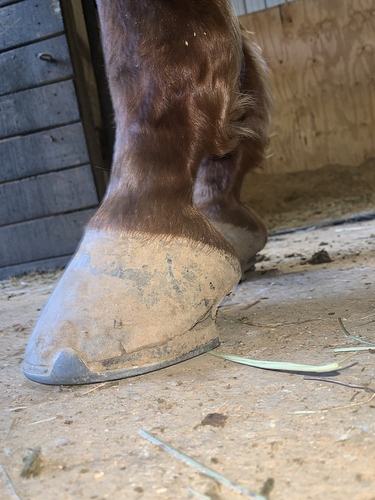
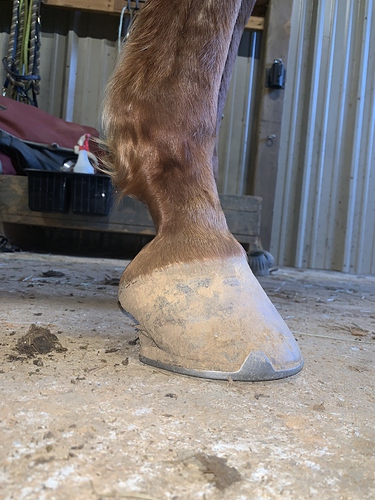

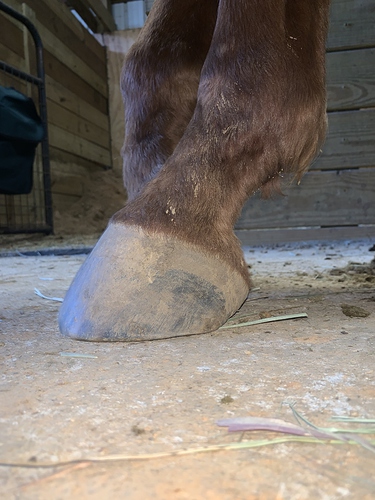


 The more broken back P3 is, the more room there is for “concavity” to develop under it–it’s a bit of guesswork without rads, of course, but you can also sometimes tell by measuring the depth of the collateral grooves near the apex of the frog and near the heels. If it’s noticeably deeper at the apex than towards the heels, it’s very likely NPA. You can sometimes tell from pictures, too, but would need better pictures to really make an educated guess.
The more broken back P3 is, the more room there is for “concavity” to develop under it–it’s a bit of guesswork without rads, of course, but you can also sometimes tell by measuring the depth of the collateral grooves near the apex of the frog and near the heels. If it’s noticeably deeper at the apex than towards the heels, it’s very likely NPA. You can sometimes tell from pictures, too, but would need better pictures to really make an educated guess.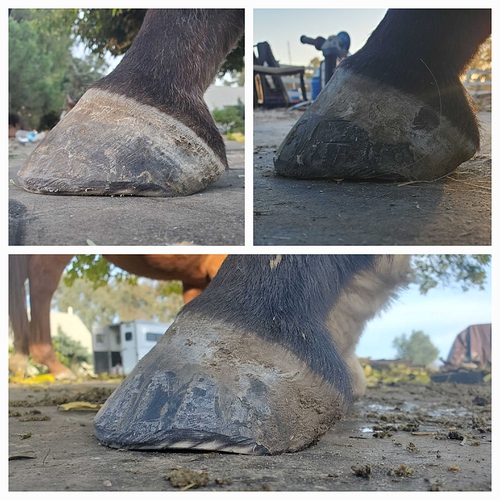
 Also, extreme concavity isn’t healthy either, it can be a sign of a retracted sole, so take a look here and make sure this isn’t what you’re seeing
Also, extreme concavity isn’t healthy either, it can be a sign of a retracted sole, so take a look here and make sure this isn’t what you’re seeing . Hind shoes have historically been tough to keep on, and yeah of course he’s NPA or flat all around last time I checked.
. Hind shoes have historically been tough to keep on, and yeah of course he’s NPA or flat all around last time I checked.